In my ever-radiating love for the colorful TTRPG system that is Overlight, it was only a matter of time before I found more ways to discuss it on the site. So picture this with me, if you will. You’ve picked up the lovely hardcover core book. You’ve read it cover to cover and fallen in love with the lore. You’ve even managed to convince a few of your RPG playing friends to spare a couple evenings for you to run a story. Then you realize you’ve got no clue what you’re doing.
This system is so different and new, it’s all kinds of strange. You’re out of your element. If the world is too unfamiliar to your players, if the dice mechanics seem too light, if there’s too much room for interpretation, if you’re confounded by combat encounters or wondering how to balance what looks like such an intriguing setting with rules so barebones you feel like you’re trying to prop up the jellyfish of TTRPGs, fear not. I’m here to help. Let me share with you some of what I’ve learned after running my first campaign over the span of roughly a year and a half. You might be surprised just how much you can turn these things to your advantage.
I’m going to break this article down into a few key points that I think encompass all you need to run a very successful game:
- Coming to terms with the rules, or lack thereof
- Player immersion
- Saying yes to your players
Hopefully these tips will help your early sessions blossom into the ongoing evenings of adventure you crave. And with that, let’s dive in!

We're all here to have a good time building a story together, right? So let's talk about how we enable that.
Dealing With The Dice
I’ll address the Cloud Serpent in the room first. Far and away the biggest critique I’ve seen of Overlight is that the dice mechanics and character builds are too light for many folks. And certainly, if crunchy builds and complex calculations are what you enjoy out of an RPG, you may be better off with other systems as I say in my Overlight review. But if you’re still reading here, I assume you’re looking for a way to make this work. Maybe you’re not averse to a rules-light system, but you feel out of your depth. When we’re uncomfortable with a new game, it’s a natural reaction to lean on the rules for guidance. In an already rules-light system you see how this becomes an issue.
Let’s talk about rules then. The core book doesn’t do a great job of outright stating how to run your difficulty checks for player rolls, but in browsing some of the supplemental adventures I stumbled across suggestions that fit the conclusion I’d naturally come to through GMing: take the degrees of success along with what they give (basic success/success with a bonus/that plus more) and then modify them by the character performing them. Let’s say a lore check is particularly difficult. I might make it require radiant success on Folklore. However, if the player attempting it has a character in a position to know more about that topic, say an Aurumel examining a master craft of their home shard, I could lower the difficulty to luminous. After all, they’re more likely to have heard of it. I used this to great effect the longer I ran our games, Banyari being particularly insightful about Banyan ecology or a character with a profession knowing more about a machine’s workings. Similarly, multiple skills can be used in any given situation, but maybe using some over others might lower the difficulty by virtue of it being more immediately related to the task at hand. This has the bonus effect of letting various players shine in their moments. Everyone will be able to contribute at some point, and that feeling of community will build. If something prevents one character from helping, the group will work harder to ensure each of their allies is unhindered, in a position to assist.
It's all a bit like Kids on Bikes, another great game by Renegade that I reviewed. In it I mention that players can make a case for using their best dice every time they roll, but what are the story implications of, say, solving every problem with their “Fight” stat? In addition to rolls being more challenging, the results themselves may vary, even if successful. Use the narrative elements of this game as a bonus, rather than seeing their malleability as a lack of substance!
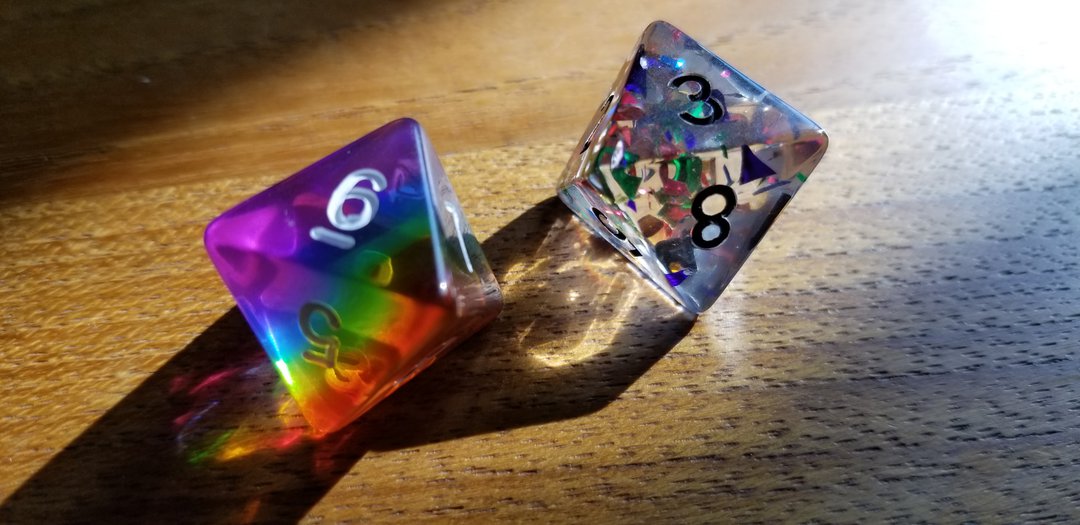
Ah, dice! The source of both TTRPG delight and dismay!
Let’s take this one step further. There are no stats for weapons and armor, no inherent bonuses to carrying things like lockpicks or shields. Is the system bland then? Flavorless? What encourages characters to branch out and be distinct? Let me ask you this, Overlight being a narrative-driven game and all. What if you just let certain characters do more things if properly equipped? If you carry a shield, you can roll to block arrows rather than always seeking cover. You can open that lock with finesse if you have the right tools. If armor is of particularly good quality, why not allow an ability like some of the armored foes’ surges, giving a health point back to the character. That armor’s stronger than it looks!
I’m not saying penalize your players for lacking gear. We’ll talk later about saying yes to them as much as you can. I’m talking about giving the opportunities. There are so few skills in this game, how can you make sure, for example, that every character who has science doesn’t end up some kind of mega-genius? Well, the finer points of their science may require tools or a lab. This will help your characters specialize in their builds and you as the GM control who has access to doing what. If a character wants to learn a new skill, you can even turn their foray into a quest of its own, having them go through an ordeal in the story to obtain the needed materials. Some Chroma already suggest this with their Luminon components, so it’s not much of a stretch to work this logic into other game elements. And on the topic of skill checks, I tend to give different results to my players depending on what skill they choose to roll for it. Standard skills for a situation may yield standard results while odd choices may yield insightful or strangely specific info or affect NPCs in unpredictable ways. There’s rarely a choice that stands out as obviously wrong.
Being adaptable to player choices in all these cases requires a certain level of improv skill by you the GM, but let’s face it. If you’re GMing, you’ve already learned that your players will take things off the rails at every opportunity. You can plan 50 pages of notes for every contingency if you like, and sometimes it’s still not enough to keep up with players. Rolling with the dice, pun intended, is part and parcel of your job. And the more you embrace it, the more you’ll realize Overlight is a great system for it.
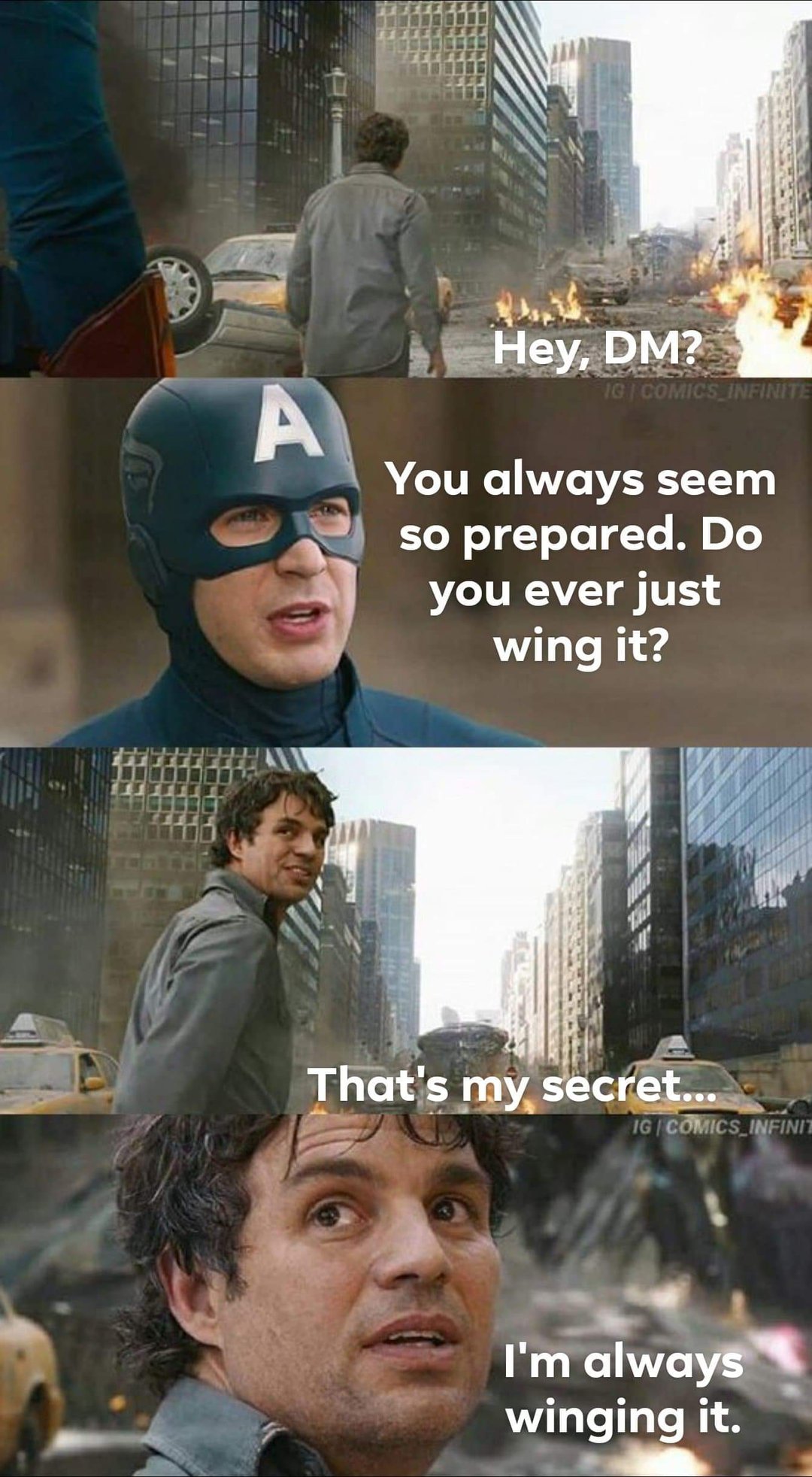
Relevant meme is relevant.
A Note On Combat
This is a tricky topic. It’s important to remember that a lot, and I mean a lot, of players come from D&D when they branch into other systems. D&D spends a good chunk of its time as a tactical wargame, and if you try to make Overlight’s combat a long and drawn out affair like in D&D, characters are going to get seriously hurt or even killed. There are a lot less ways to mitigate damage in Overlight, leaning instead on fast, exciting combats that typically resolve within a few rounds. Wounds that aren’t dramatic (the white boxes on the health track) go away as soon as characters have a chance to catch their breath, so lean more on this style of fast-paced action to shape your encounters.
My combats started to get a lot more exciting, as well as cinematic, when I stopped building them like minis on a map and more like—well—a movie scene. A quick combat might be as simple as an assassin flicking a dagger out at close range and stabbing at a character while everyone else rushes to subdue them. It might be a few rounds of a bar brawl, folk flying across tables and throwing chairs. A more epic encounter for a major chapter “boss” might go longer, encouraging the group to rotate their tactics or get creative in other ways to manage dwindling health. A high tension encounter might not give characters a chance to rest between small fights, whittling down their stamina as they rush to escape the scene, knowing that they’ll be ok if they can just get away!
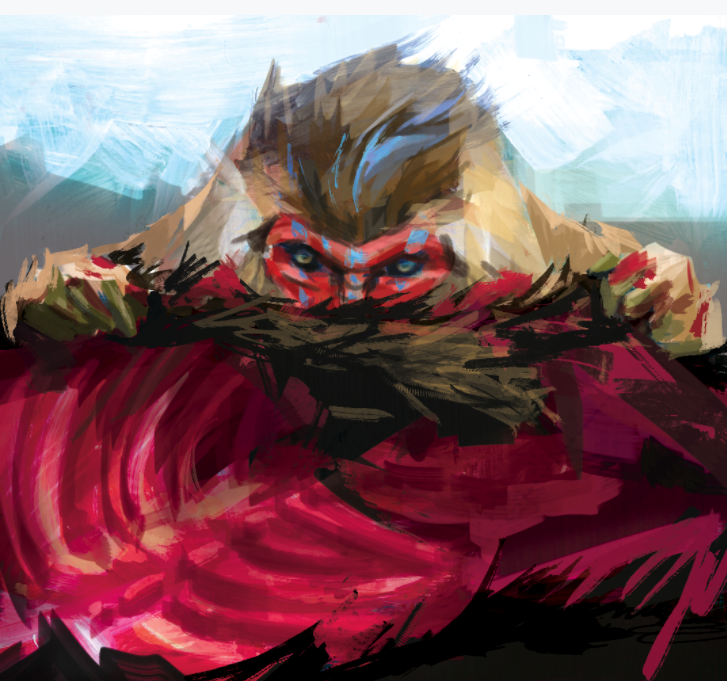
Combat doesn't have to dominate half your session. Some of the best tension resides in quick, dramatic encounters.
My point in all this is to use what you have. Sure the rules are light, but there’s little need to invent dozens of house rules to uproot everything. There’s a whole section of combat maneuvers that players can spend spirit or fury to activate, oft forgotten by my players until I reminded them for the Nth time. I usually keep the bookmark tassel on this page spread, lamenting this info wasn’t included on the back of the otherwise amazing GM screen when I reviewed the supplemental materials. Many a fancy trick has been attempted by rolling an Outmaneuver against a boss. When these moves succeed, they create epic moments in the combat, for the characters involved, and for the story overall. Don’t worry about necessarily briefing your players on every single combat maneuver. Instead just remind them that they exist and if they ask “how do I…” in the middle of combat, toss a new one their way. Before you know it, they’ll be fluent in the system while never breaking pace on the cinematic encounters taking place.
Work with what you have. There are no major rules for movement and characters can dash about within reasonable distances to hit foes, but maybe you can toss in a skill check mid-combat for them to vault a table, spring off a nearby wall, and tackle someone across the room. If you can dream it up, a movie playing in your mind, you can make it happen in game. Likewise, creatures you create are only as limited as your imagination. Try tossing some basic stats together with an interesting surge ability or two and a fantastical description. If you need a basis for stats, pull from the creatures and foes included in the back of the book for rough power levels. Then sit back and watch as your players ask you time and again how you come up with such a vibrant world.
When you focus on the story you want to tell with your players and the scenes you want to set for them, and less on the minutiae of every single die roll, you’ll find the rest just seems to fall into place.
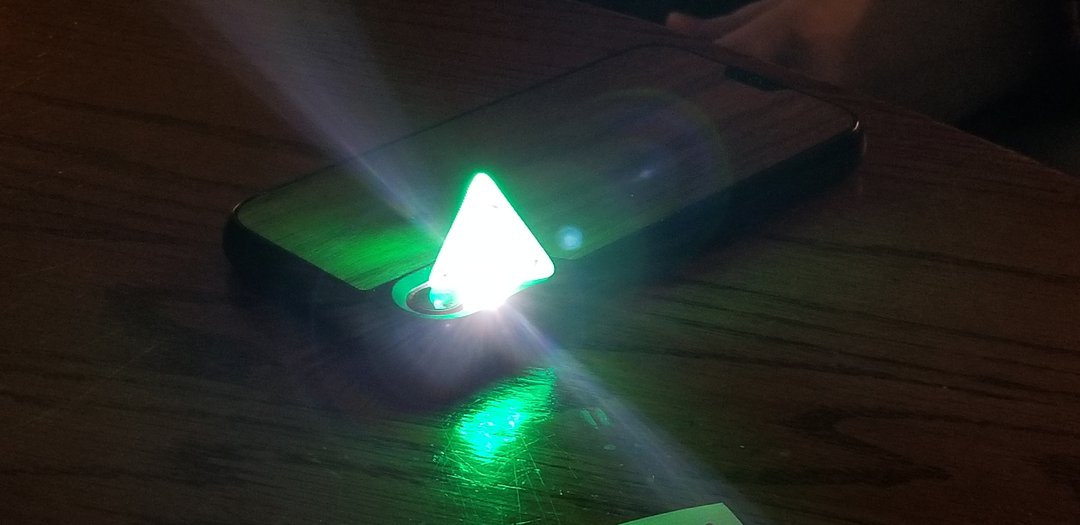
...and may the Overlight bless your dice.
Getting Into It
Second on my list, but in my opinion no less important than dice mechanics, is player immersion. This world is rich and intriguing. It’s got everything from creatures of pure imagination, adventure in every possible environment you could want, political machinations, and plot hooks galore. Every NPC the players encounter is potentially story material for bringing around again at later times. Players will ask after creatures you’ve created if they haven’t already tried to take one as a pet in their travels. But if you’re going to get them into this world, you need to get their buy-in. That’s a tough ask when the world has no common reference point players can relate to in their prior RPG or fantasy knowledge.
We’re well away from the standard Tolkein-esque worlds of elves and dwarves, dragons and orcs. You, the GM, are going to need to feel comfortable enough with the world that you can give it some life in between the obvious descriptions of foes and merchants your players will regularly interact with. You’ll need to describe the bustle of the Great Market in Haark, the City Magnificent, as well as how the buildings cascade both dizzyingly upwards and down into unknowable depths when players swing their vision around. You need to describe the shard folk as they move about the market, a perfect opportunity for your players to see the diversity of those that live in this world. What I’m saying is you need to be really comfortable with at least the core Overlight book.
I’m not saying necessarily that you must read it cover to cover before starting your first session. I would recommend you finish it at some point, but as long as you’re comfortable with what you need for your first few sessions there’s nothing wrong with jumping in now and continuing to brush up as you go. I prefer refreshing on the shard primer section near the front of the book before my game nights. Here are a couple of tricks I’ve used to get my players comfortable with the world at large as you’re learning it. Perfect for someone who’s relatively new to the system as well as those that can quote page numbers with their lore.

Get them into the world and you'll find the world does much of the engagement work for you!
Keep It Simple, Slow It Down
There’s so much for players to dive in to. The natural tendance for most GMs, myself included, is to want to hit it all at a running pace. There’s so much to see and we’ve got no time to waste! Slow down. Relax. You’re all going to get there in time. Remind yourself that as the GM you’re going to need to shepherd the players through the shards as they travel. Each encounter should serve your plot, yes, but it should also serve to teach them something new about the world. Maybe they can learn what a fantastical but dangerous place the forests of Quill are. Maybe today the lesson is that Banyan is beautiful, and its native folk can be welcoming and wonderful, but a single Fellgat is a creature of terror for good reason. Maybe the lesson is simply that one should always guard one’s dealings while on Veille. Nevermind the first time someone shatters a Chroma. Your players’ out-of-character wonder may translate directly into in-character reactions, as it did in my sessions. Work with that!
All the things you want your players to experience can still be future sessions in their own rights. In fact I’ve found the more I slow down, the more time I have to flesh out those adventures into robust and engaging stories of their own rather than just having them be the next footnote in the main campaign. In truth, I found that for pretty much a whole year running games, every single session was capable of teaching my players something about the shards, their Chroma, or the folk that live in between. Give your players that chance to learn from their immediate surroundings. Overlight, as a reminder, is just as much about a journey of self-discovery, of developing characters, as it is about grand adventure and saving the day. And at the end of the play sessions, how their characters have developed is one of the things any player will continue to think on fondly.
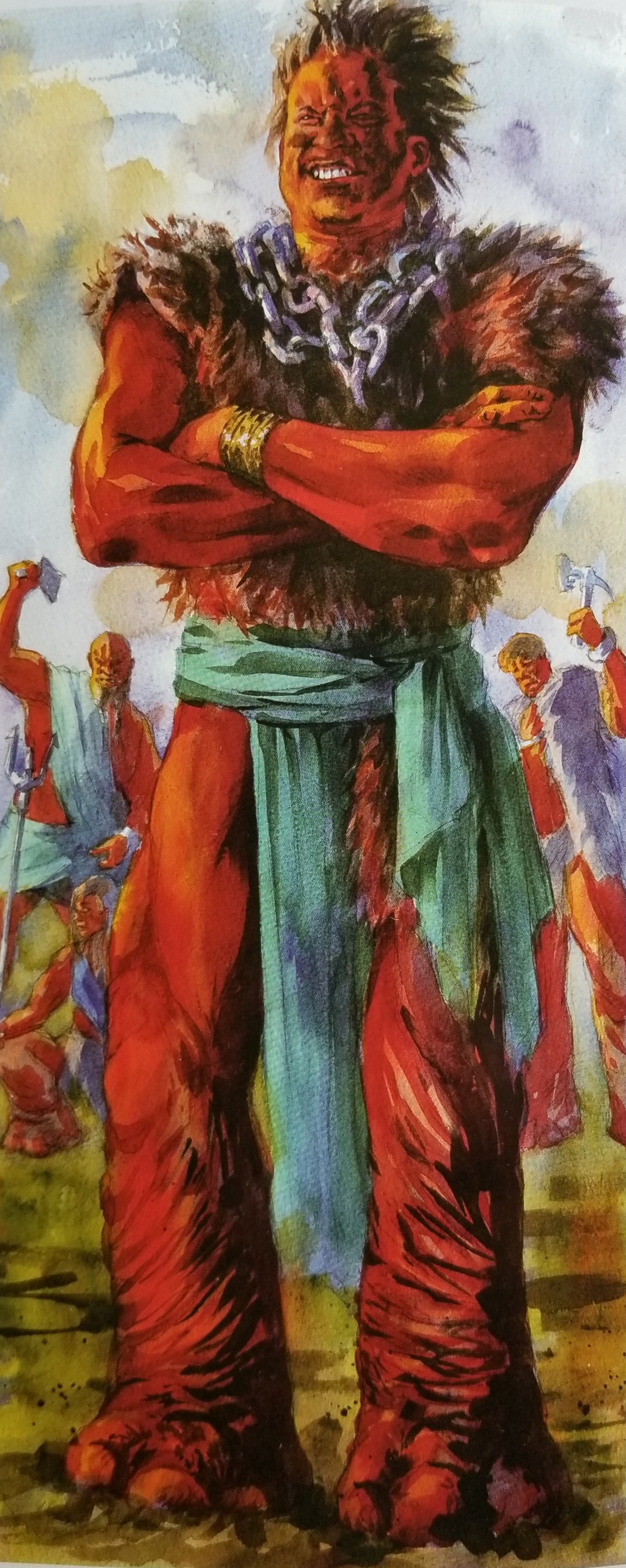
I mean just look at this guy! An NPC from one of the modules, aren't you curious to learn more just by seeing him? Character is everything!
Do You Even Prologue
Do you have a session zero with your players? You know, that session before the game properly starts where you talk with your players about their expectations and help marry them with the world you’re planning on running. Session zeros are great for establishing the rules everyone wants to follow, such as grittiness level (or silliness level on the flip side) and stuff like keeping graphic content “off screen.” I’ve taken mine a step further though. I’ve made a session zero point five for each player to then dip them into the world. I’ve called these sessions “prologues.”
Call me obsessive if you will, but while my friends and I passed around our limited copies of the core book, as I gave a 5 minute pitch on the shard races and helped my players create their first characters, I though “wouldn’t this be a perfect opportunity to play a small intro with them too?” In many cases, I was already sitting 1-on-1 with a player sharing my book prior to our game nights kicking into full swing. So I put together little 1 hour standalone adventures for each of them, a prologue to our main game if you will. Usually a single, simple plot thread involving a few rolls and a very straightforward situation that I’d prepared beforehand. It was a chance for me, the GM, to introduce each player to their home shard and to test their characters’ perspectives on some of their bigger issues.

The challenges in these prologues were designed to help players get a better sense of the issues and culture from “back home.” I would, of course, take backstories into account, perhaps slightly modifying the challenge or adding named NPCs in the form of family, adversaries, or others as indicated by my players. The prologues could either then act as a backstory disconnected from the larger game or a plot thread that linked that character into the larger plot. The act of having my players play on their home shards, even only for an hour apiece, was so much more powerful than just telling them about it. As a result, my players took to the world much more smoothly and found roleplaying their characters that much easier. The bonus in a group of diverse shard races was that each player conducted a sort of “teach back” during the main campaign; in bringing their own characters to life, they also taught the other players snippets of shard lore from places they hadn’t learned yet, enriching everyone’s understanding of the world.
Maybe this isn’t quite how you’ll do things for your own group, but I hope it still gives you ideas. Take my idea of 1-hour prologues and bend it to your needs. Find creative ways to immerse your players before they even start the main adventure, and I promise their characters will make the world even more rich. After all, a TTRPG is at its best when both the GM and the players are collaboratively building the story.
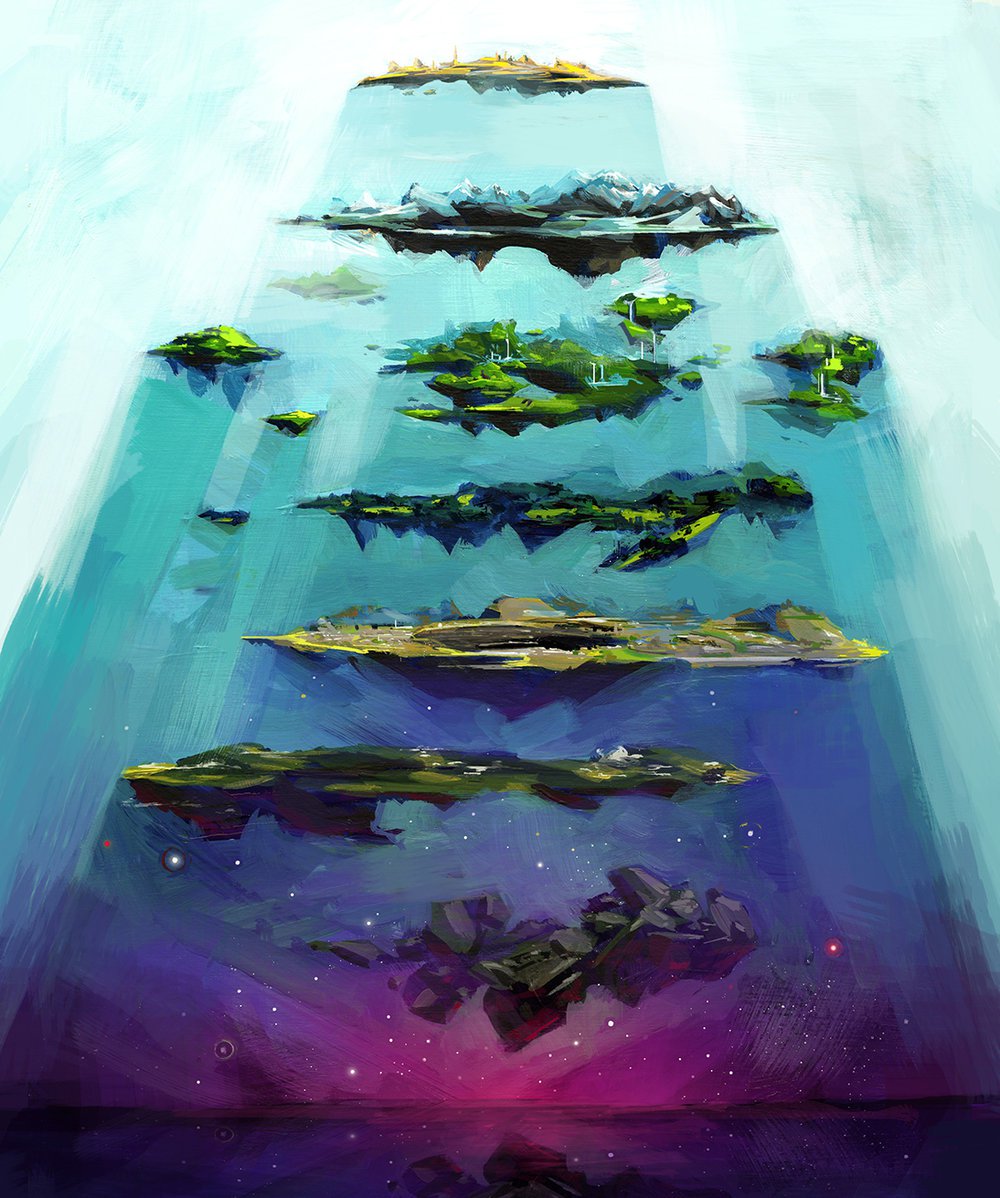
Bring these shards to life! Every time you play is a chance for your players to learn more about these wonderous places!
Just Say Yes
It’s a kneejerk reaction I’m sure we’ve all had, those of us who run the games. Players think of something you’re completely unprepared for, and that initial surge wells up from within the pit of your stomach. NO! Not only does it make little to no sense in the moment, at least to you, it also breaks the carefully crafted narrative you’ve prepared for this week. Before you know it, you’re looking for ways to slap down the idea like a basketball player denying a 3-pointer.
Speaking of which, it’s time for discussion point number 3. We’ve all been there, but I’m here to tell you it’s going to be alright. Something magical happens when you stop saying no to your players and start saying yes. The world stops existing solely in the head of the GM and becomes the shared property of all the players. It’s a thought that I’m sure terrifies some GMs, but we’ll discuss why it’s amazing in terms of Overlight. Granted, there are still times my players ask for rolls that make both no sense to me and that they themselves cannot seem to explain. I will still say “maybe not” in these cases. But the world has literally opened up to me when I started looking for any excuse to say “yes” to my players.
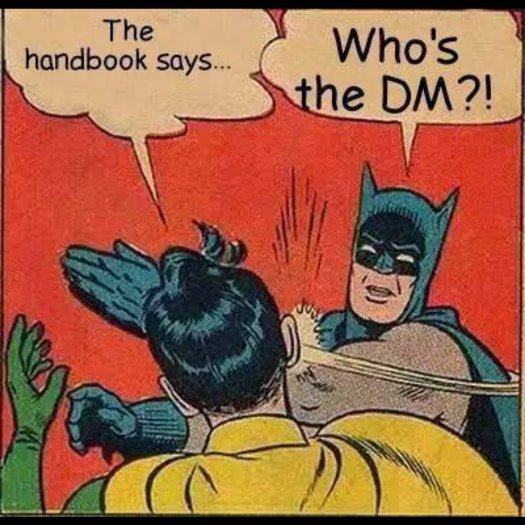
I’m going to take a step back here for a moment to discuss the mechanics of this game, sparse as they appear. Of course there are obvious moral pluses to saying yes to your players. It helps drive engagement for one. It’s inclusive and collaborative behavior. But if that’s not enough incentive for you, consider this: the rules as printed in the core book state that players can and should make cases for combining different skills and virtues from their defaults. Sure, blades is a vigor virtue skill normally, and the book says throwing them can be done as blades (logic), but what if I put your character into complete darkness and you want to throw a dagger? You make a case to combine wisdom, your best virtue, with blades. Your justification is that you’re going off pure hearing and hunches rather than any kind of raw speed or predicting where an enemy will be standing. Wisdom is the skill for perception and intuition, after all, so I allow it.
Perhaps I put a small challenge penalty on the roll itself due to your character never having tried this feat before, but as they practice this skill, taking their character in this new direction, I drop the penalty. Your character grows. One day they may even be known as a master knife thrower! The game is full of this kind of stuff. The list of skills is pretty small, all things considered, so players are naturally going to bump up against this limited list over and over. The more interesting and creative ways they find to mix skills and virtues, let alone applying different skills in different situations, the more diversity in the results you will find. Much like reading tea leaves, with a little practice you will be able to interpret the results of any odd dice combination your players throw at you. Saying “yes” to your players here isn’t just an excuse to get them more involved. It opens up possibilities. We can built on this foundation even more, though.
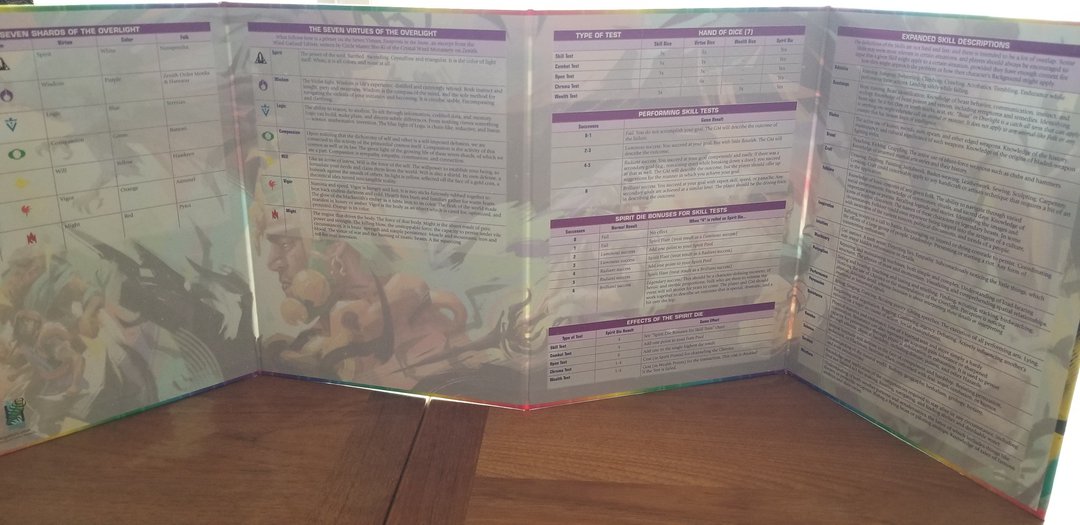
The GM screen makes clear that there aren't a whole lot of rules to reference during play. Skills are limited, so get the most you can out of their myriad of uses!
The Narrative Connection
I’ll admit it. There are times when I cannot come up with 100% of the story details myself. Try as I might, brainstorming for a week leading up to game night, I just can’t seem to figure out how I’ll fill out a particular area of my plot or how I plan to get the group from point A all the way to point D. So I’ll let you in on a little secret. You know what I like to do during these times? I plan the barebones basics I might need such as stats of enemies in the area and other hazards they may face, I nail down the antagonists’ motivations and a few of the ways a scene might end, and then I leave everything else up in the air. I wait to see what my players do, and then I ride their decisions through the scene as if I’d been planning it all along.
The results are always phenomenal! The way I see it, there’s little point in overplanning a session that players can take in radically different directions anyway, and Overlight is particularly well situated for dealing with it. Consider for a moment that monsters really only have two stats to roll, mental and physical, meaning even at the drop of a hat you can quickly fill in stats for basic guards, thugs, monsters, or anything else you need even if you find your preparation hasn’t prepared you properly. But in building on saying yes to your players, I find that giving them the lead (even if they don’t realize it) allows me even more creative freedom. Whether it’s forcing me to read the tea leaves on what a particular roll combination means or simply relying on my players to guide the action to the next major narrative point, my brain is constantly spurred into new and creative ideas. I can’t seem to come up with everything on my own, but by engaging my players, in saying yes to them and enabling them to take more creative authority in our shared world, they fill in the missing pieces.
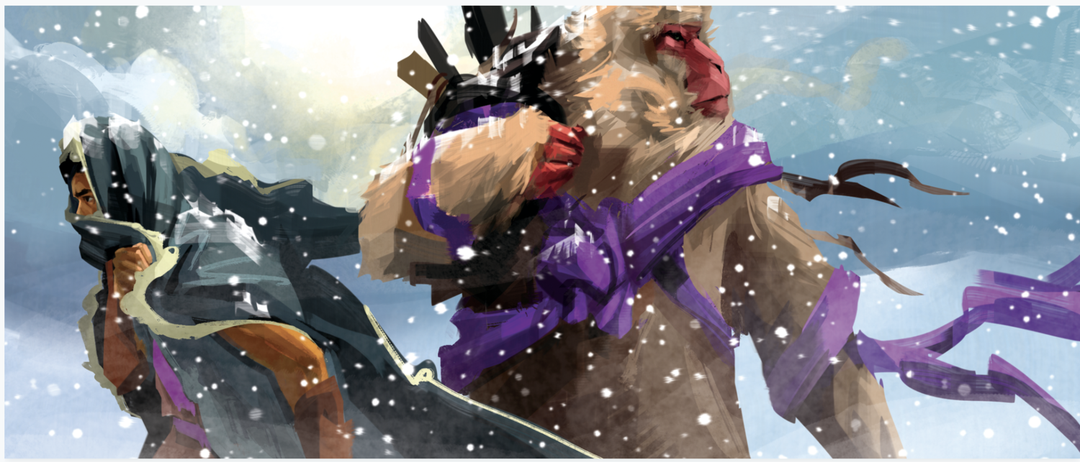
Relying on one another might be a theme in the game itself. Funny how art mirrors life and vice versa.
In terms of making a fun and engaging world, I don’t think it gets much better than this. Sure, I can try and make character specific quests to weave in for my group, expand their limited backstories in an attempt to make personal plots, but by allowing my players as much agency as possible within the game, I can react to their actions instead of simply trying to shepherd them on a single path. In perhaps one of the greatest ways I create engagement in my games, something as simple as saying yes to atypical ideas, saying yes to odd skill rolls, I’m given perhaps the greatest gift of all: my players feel like they’re a part of the world. They want to keep playing. They want to see the next adventure, and they want to see what happens to their characters. And in TTRPGs, let’s face it, character growth is what folks will remember long after the adventure has ended.
I really cannot stress this enough. Say yes to your players whenever you can. Overlight, as a rules light and narrative based game, gives you more wiggle room to deal with a higher degree of improv than perhaps you’re used to in other, heavier systems; or at least perhaps it allows you to do so in a way that doesn’t have you hitting pause on the action while you flip through reference books. Each opportunity you get, building off the input of your players, is a chance to further increase their enjoyment in this strange and magical world. Ride it out together as a group and see where it takes you all!
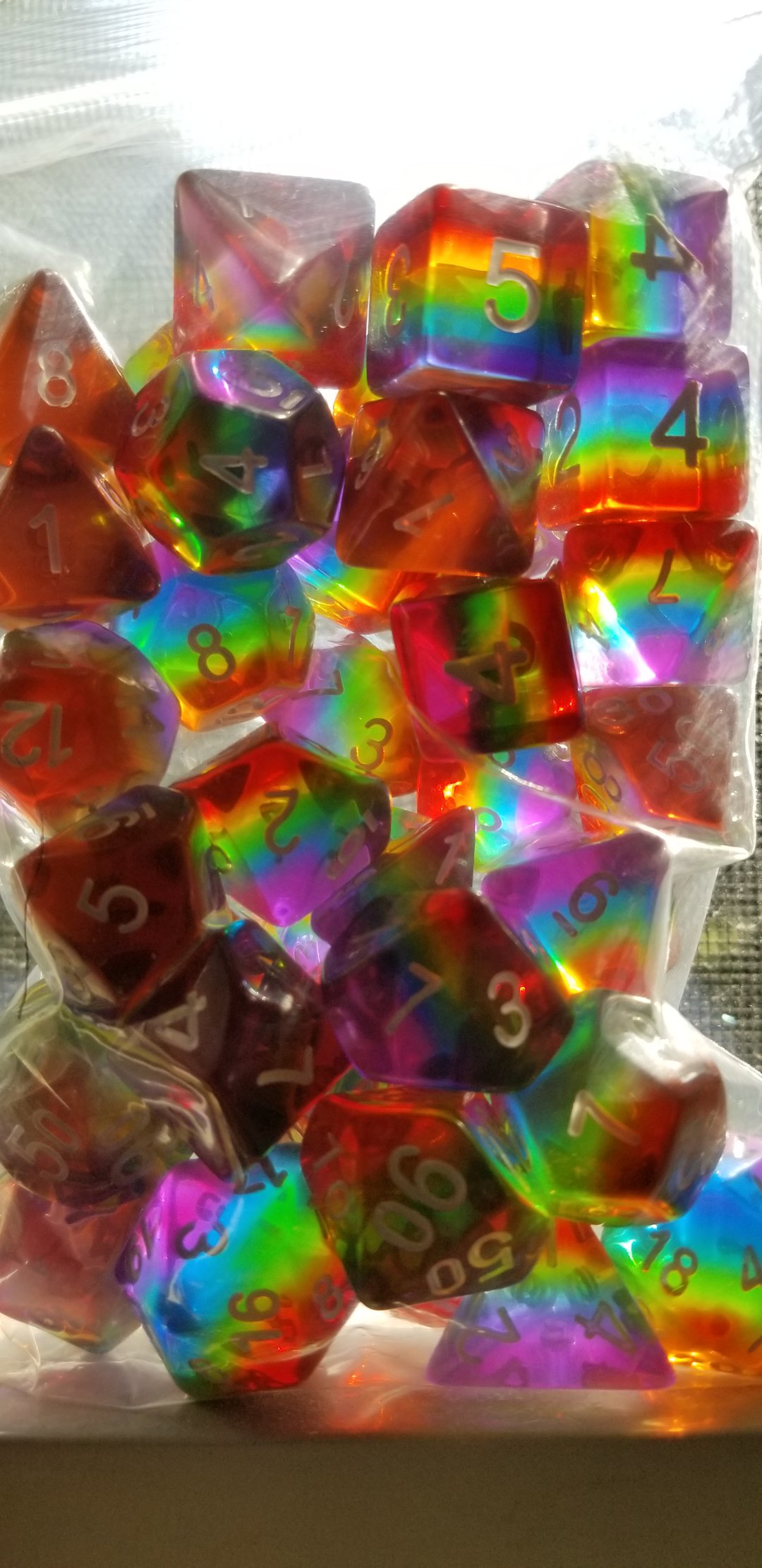
When the energy cascades through your game, when creativity meets the dice, colorful things happen!
Wrapping Up The Session
I hope that you’ve found at least some of what’s been included in the last over-four-thousand words helpful. I’m confident that if you enable your players within the game’s systems, along with immersing them in the setting and lore, you will be off to a great start with your group. Mix in the “say yes” mentality to help drive your sessions forward and you’ve got a winning recipe for years of good games. As I finish this article, I’m also finishing up my notes for a second campaign of Overlight which will see a round of new players coming in to join our vets. All my returning players are hyped to get back to their characters, and after a fresh round of prologues all my new players are champing at the bit as well! The experience has given me the means to reflect on what I’ve done in the last year and a half that keeps my game successful. I hope you take something away from it too and let Overlight find a place of joy amongst your players. Good luck out there, fellow GM!